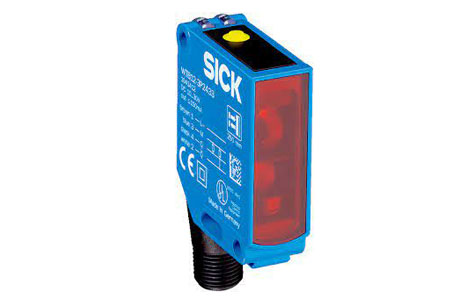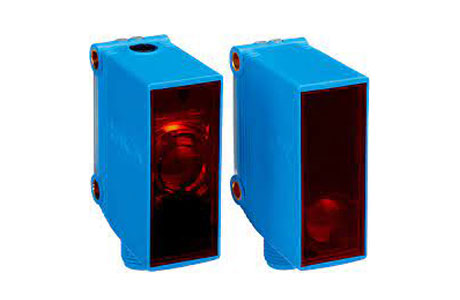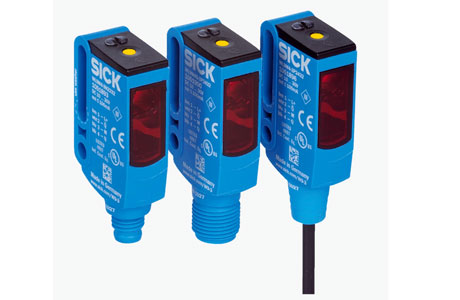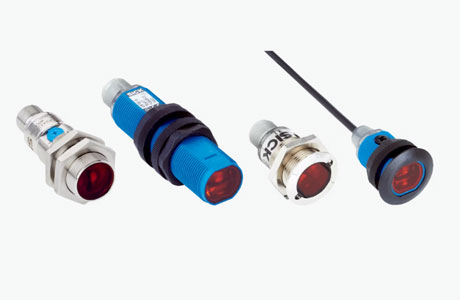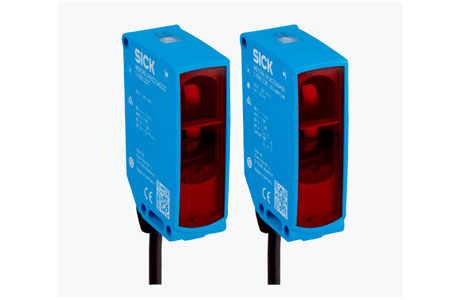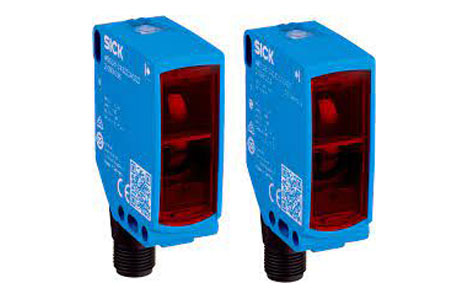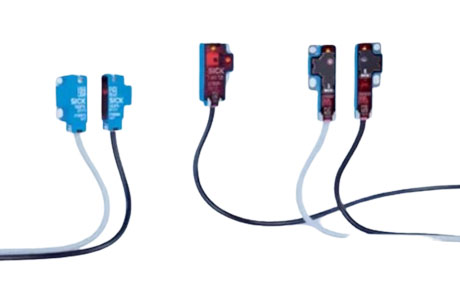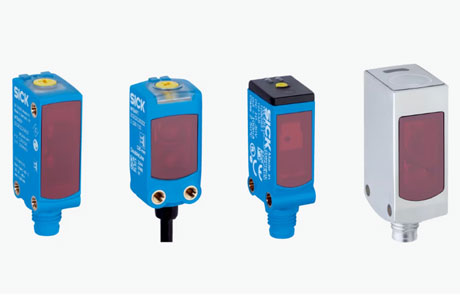
Sick Photoelectric Sensors: Diffuse Reflective Photo Sensor
IndMALL Automation offers a comprehensive range of Sick Photoelectric Sensors, altered according to various industrial applications. Our range includes the W12 Series, with a 7-meter sensing capability and durable metal housing. The G10 Series, a Sick retro-reflective sensor, offers precise detection within a 950 mm range. For background suppression, the W9 Series and the compact G2F Series are ideal, ensuring quick response and efficiency.
The W16 Series, a Sick through beam sensor, provides long-range detection, suitable for challenging environments. The W26 Series, a Sick reflective sensor, and the W4 Series, a miniature photoelectric sensor, offer versatility and compact design. We also provide Sick diffuse sensors, ensuring reliable detection in various conditions. IndMALL Automation guarantees competitive prices and support when compared to Sick Photoelectric Sensor Distributors.
Sick Photoelectric Sensors: W12 Series
- Sensing Range: 0 to 7 meters max.
- Light Source: LED, visible red light (640 nm wavelength).
- Output: PNP digital, light/dark switching, max output current ≤ 100 mA.
- Housing: Rectangular metal, dimensions 15.6 mm x 48.5 mm x 42 mm.
- Connection: M12, 4-pin connector.
- Enclosure Rating: IP66, IP67, IP69K.
- Operating Temperature: –40 °C to +60 °C.
Sick Retro Reflective sensor: G10 Series
- Dimensions: 20 mm x 50 mm x 39 mm.
- Sensing Range: 40 mm to 950 mm.
- Light Source: PinPoint LED, 625 nm wavelength.
- Output: PNP, light/dark switching, max output current ≤ 100 mA.
- Response Time: ≤ 500 µs; Switching Frequency: 1,000 Hz.
- Connection: M12, 4-pin connector; Enclosure Rating: IP67.
- Operating Temperature: –30 °C to +60 °C.
- Supply Voltage: 10 V DC to 30 V DC.
Sick Background Suppression Sensor: W9 Series
- Dimensions: 12.2 mm x 50 mm x 23.6 mm.
- Sensing Range: Max 20 mm to 350 mm; typical 20 mm to 200 mm.
- Light Source: PinPoint LED, visible red light (650 nm wavelength).
- Output: NPN, light/dark switching, max output current ≤ 100 mA.
- Response Time: < 0.333 ms; Switching Frequency: 1,500 Hz.
- Connection: Cable, 4-wire, 2 m; Enclosure Rating: IP66, IP67, IP69K.
- Operating Temperature: –40 °C to +60 °C.
- Supply Voltage: 10 V DC to 30 V DC.
Sick Cylindrical Photoelectric Sensor: GR18 Series
- Dimensions: 18 mm x 18 mm x 73.5 mm.
- Sensing Range: Max 3 mm to 350 mm; typical 3 mm to 250 mm.
- Light Source: LED, infrared light (850 nm wavelength).
- Output: NPN, light/dark switching, max output current ≤ 100 mA.
- Response Time: < 1,000 µs; Switching Frequency: 500 Hz.
- Connection: Male connector M12, 4-pin; Enclosure Rating: IP67.
- Operating Temperature: –25 °C to +55 °C; Supply Voltage: 10 V DC to 30 V DC.
Sick Reflective Sensor: W26 Series
- Sensing Range: 0 m to 18 m (max), recommended 0 m to 12 m.
- Output: Push-pull (PNP/NPN), max output current ≤ 100 mA.
- Response Time: ≤ 500 µs; Switching Frequency: 1,000 Hz.
- Connection: Male connector M12, 4-pin.
- Housing: Rectangular, plastic, dimensions 24.6 mm x 82.5 mm x 53.3 mm.
- Enclosure Rating: IP66, IP67, IP69.
- Operating Temperature: –40 °C to +60 °C; Supply Voltage: 10 V DC to 30 V DC.
Sick Through Beam Sensors: W16 Series
- Sensing Range: 0 m to 45 m (max), recommended 0 m to 30 m.
- Output: Push-pull (PNP/NPN), max output current ≤ 100 mA.
- Response Time: ≤ 500 µs; Switching Frequency: 1,000 Hz.
- Connection: Cable with M12 male connector, 4-pin.
- Housing: Rectangular, dimensions 20 mm x 55.7 mm x 42 mm.
- Enclosure Rating: IP66, IP67, IP69.
- Operating Temperature: –40 °C to +60 °C; Supply Voltage: 10 V DC to 30 V DC.
Sick Beam Sensor: G2F Series
- Detection: Background suppression.
- Size: As small as 14 mm x 24 mm x 3.5 mm.
- Sensing Range: Up to 700 mm, depending on the model.
- Power: 10 V DC to 30 V DC, 20 mA consumption.
- Output: NPN/PNP, < 50 mA max; Response Time: < 0.625 ms; Frequency: 800 Hz.
- Connection: Cable or M8 connector.
- Temperature Range: –20 °C to +50 °C (operating).
Sick Miniature Photoelectric Sensors: W4 Series
- Sensing Range: 4 mm to 150 mm.
- Light Source: PinPoint LED, 650 nm.
- Voltage: 10 V DC to 30 V DC; Output: NPN, ≤ 100 mA.
- Response Time: < 0.5 ms; Frequency: 1,000 Hz.
- Size: 16 mm x 39.5 mm x 12 mm.
- Material: Plastic, ABS/PMMA; Protection: IP67, IP66.
- Temperature Range: –40 °C to +60 °C.
Sick Sensor Photoelectric: W2 Series
- Size: 7.7 x 21.8 x 13.5 mm.
- Range: Max 1.2 m, typical 0.55 m.
- Light: PinPoint LED, 640 nm; Voltage: 10 V DC to 30 V DC.
- Output: PNP, ≤ 50 mA.
- Response Time: < 0.5 ms; Frequency: 1,000 Hz.
- Connection: M8 connector, 3-pin.
- Material: ABS/PC plastic; Protection: IP67.
- Temperature Range: –25 °C to +50 °C.
Product List:
Model No |
Image |
Sensing Range |
Dimensions (W x H x D) |
Supply Voltage |
Output |
Connection |
|---|---|---|---|---|---|---|
| WL12G-3B2531 | 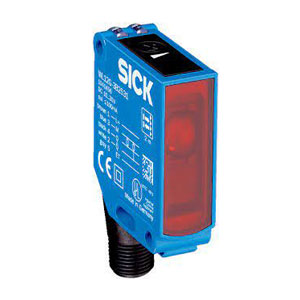 |
0 m … 4 m | 15.6 mm x 48.5 mm x 42 mm | 10 V DC … 30 V DC | PNP | Male connector M12, 5-pin |
| WTB4FP-21311120ZZZ | 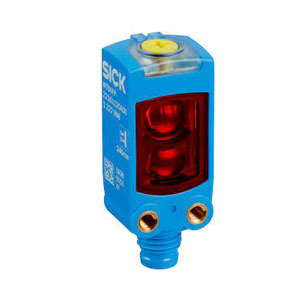 |
4 mm..220 mm | 16 mm x 40.1 mm x 12.1 mm | 10 V DC … 30 V DC | Push-pull: PNP/NPN | Connector M8, 3-pin |
| GTB2S-P1331 | 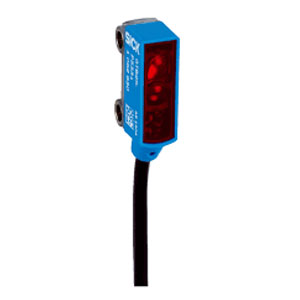 |
5 mm … 30 mm | 7.7 mm x 21.8 mm x 13.5 mm | 10 V DC … 30 V DC | PNP | Cable, 3-wire, 2 m |
| WLG4S-3P2432V | 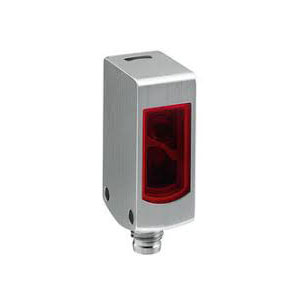 |
0 m … 5 m | 15.25 mm x 49.2 mm x 22.2 mm | 10 V DC … 30 V DC | PNP | Male connector M12, 4-pin |
Our product list includes a variety of Sick Photoelectric sensors tailored for diverse applications. The WL12G-3B2531 model, with a sensing range of 0 to 4 meters, has dimensions of 15.6 mm x 48.5 mm x 42 mm and operates on a supply voltage of 10 V DC to 30 V DC. It features a PNP output and connects via a male M12, 5-pin connector. The WTB4FP-21311120ZZZ model offers a sensing range of 4 mm to 220 mm, with dimensions of 16 mm x 40.1 mm x 12.1 mm. It also operates within a 10 V DC to 30 V DC supply voltage range and has a push-pull output (PNP/NPN), connecting through an M8, 3-pin connector.
For more compact needs, the GTB2S-P1331 model provides a sensing range of 5 mm to 30 mm, sized at 7.7 mm x 21.8 mm x 13.5 mm, and uses a 10 V DC to 30 V DC supply voltage with a PNP output, connected via a 2-meter, 3-wire cable. Lastly, the WLG4S-3P2432V model, with a 0 to 5 meters sensing range, measures 15.25 mm x 49.2 mm x 22.2 mm, operates on a 10 V DC to 30 V DC supply voltage, features a PNP output, and connects using a male M12, 4-pin connector.
Frequently Asked Questions
How does a SICK photoelectric sensor work?
A SICK photoelectric sensor emits a beam of light and detects the reflection from a target object. The sensor’s receiver measures the intensity of the reflected light, which is influenced by factors like object color and distance. The sensor then processes the light signal and generates an output, indicating the presence or absence of an object.
SICK offers various types of photoelectric sensors, each designed for specific applications. These sensors are widely used in industrial settings for reliable and accurate detection tasks.
Which photoelectric sensor has longest range of detection?
The SICK W16-2 Long Range Photoelectric Sensor is known for its extended range of several meters, making it suitable for distance measurement and object detection in warehouse automation, material handling, and outdoor monitoring applications.
Can photoelectric sensor measure distance?
Yes, certain photoelectric sensors, specifically those based on time-of-flight (ToF) technology, can measure distance. These sensors emit a light signal and calculate the time it takes for the light to travel to the target object and return. By analyzing the time of flight, the sensor can determine the distance.
These sensors are commonly used for distance measurement in industrial applications such as object positioning, level sensing, and collision avoidance systems. However, not all photoelectric sensors have distance measurement capabilities, so it’s important to choose the appropriate sensor type for your specific needs.
What kind of radiation does a photoelectric sensor use?
Photoelectric sensors commonly use either infrared (IR) or visible red light radiation. Infrared light, beyond the visible spectrum, is often used due to its reliability and resistance to ambient light interference. Visible red light, within the visible spectrum, is sometimes utilized for alignment or visual indication purposes.
The selection between IR and red light depends on the application requirements and the characteristics of the objects being detected.
Please share your Sick Photoelectric Sensors Requirement to sales@indmall.in

